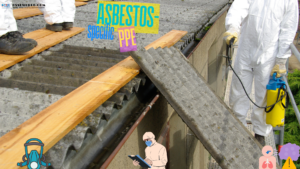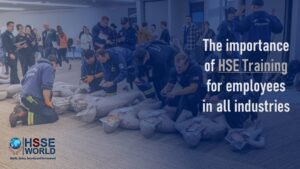Online Quiz: Personal Protective Equipment (PPE)
4 min readWearing personal protective equipment (PPE) while at work is of great importance. It ensures that should any accidents occur, the damage imposed on the wearer is significantly reduced or prevented altogether. Personal protective equipment is defined as equipment, including those that protect from adverse weather conditions, that is intended to be worn or held by a person at work and protects them against one or more risks to their health and safety. Think you know all about PPE? Take our quick PPE quiz and test your knowledge!
Test your knowledge and answer the following Quizzes to learn how to protect yourself and select the proper PPE
Why Workers Don’t Wear Personal Protective Equipment (PPE)?
You would imagine anyone in their sound mind would willingly wear Personal Protective Equipment (PPE) when performing dangerous tasks or activities. However, plenty of the workers don’t. They put themselves at the risk of injury or death and their employers at the risk of prosecution.
We all understand that Personal Protective Equipment (PPE) can be the powerful last line of protection. But usually, you see workers not wearing the Personal Protective Equipment (PPE)?
Shocking Stats
In 2015-2016 there were 144 deaths in the workplace or premises, and some 621,000 were non-fatal injuries.
Personal Protective Equipment PPE such as hard hats, goggles, gloves, and boots play an essential role in managing Health and Safety Risks. However, the historical data or figures of how many workers suffering or experiencing the injury were not wearing Personal Protective Equipment (PPE).
Health & Safety Executive (HSE) figures show there are around 9,000 Personal Protective Equipment (PPE) related incidents each year.
What’s going on?
Personal Protective Equipment (PPE) can prevent or lessen the risk of eye, head, or bodily injury from all the manner or practices of activities, often those that you might presume are low risk, but especially when handling the chemicals and dangerous substances or from working with the machinery and tools.
Of course, Personal Protective Equipment (PPE) only offers protection if it’s worn otherwise not.
Unluckily, history shows the Personal Protective Equipment (PPE) that employers provide or give is often not worn at work.
Why do workers take risks?
So, understanding all this, why do workers prefer not to wear Personal Protective Equipment (PPE)?
The Health & Safety Executive (HSE) says that failure to use the provided Personal Protective Equipment (PPE) costs around £65m and that the underlying causes or reasons include:
• Little/no guidance or supervision;
• Lack of the procedure or process
• Poor awareness/risk perception or lock of the knowledge
• Human error/misjudgment or mistakes
Although the workers sometimes decline or refuse to wear Personal Protective Equipment (PPE) on religious or health grounds, most refusals are because of poor management, training, and communication.
If workers don’t understand why Personal Protective Equipment (PPE) is needed or have no way to choose it, they are more likely not to use it.
What are the steps, employers can take?
Employees should know why Personal Protective Equipment (PPE) is needed and be trained or qualified to use it correctly.
Employers must make sure that the workers are aware or informed of the dangers of not using Personal Protective Equipment (PPE). They need to be educated and trained to buy into the idea that Personal Protective Equipment (PPE) should be used.
Indeed, education on the risks of the injury and training on the use of Personal Protective Equipment (PPE) can change the attitudes and the practices that lead to the damage or injury.
When faced with the workers who refuse or resist using the Personal Protective Equipment, you need to pin them down on worker’s objections or problems:
• Is it uncomfortable and awkward to wear?
• Is it too heavy or big?
• Does it restrict or limit movement?
Good communication, efficient or adequate consultation, better training, and reasonable adjustment are usually enough to head off the objections.
While the workers often complain Personal Protective Equipment (PPE) “gets in the way”, this feeling or attitude can be overcome if it fits well, of good quality, is comfortable, and does not prevent or stop them from moving or seeing.
What about the refusal on the religious or the other grounds?
The Law is crystal clear: the Personal Protective Equipment (PPE) at Work Regulations 1992 include no exemptions from using or wearing the Personal Protective Equipment (PPE) on religious, medical, or other grounds.
The best-known example of Personal Protective Equipment (PPE) clashing with the religious belief involves the turban-wearing Sikhs. While the Employment Act 1989 says that they do not have to wear head protection, the exception only applies to the construction sites.
If your workers refuse to wear the required Personal Protective Equipment (PPE), they should be re-deployed to a less dangerous job or the area, or if necessary disciplined. Indeed, disobeying safety instructions should be at least as serious as another rule-breaking.
Contractual terms and conditions should treat the failure to follow reasonable Health and Safety instructions or guidance as for potential gross misconduct.
Communicate: Good Communication Helps Avoid Conflict.
Problems or difficulties often occur when the employers attempt to make the employees use the Personal Protective Equipment (PPE) without first consulting or asking them.
If you insist “workers wear this…” then their likely attitude or behavior will be “why should I?”
By contrast, the employers usually see a significant drop in incidents when workers are engaged and:
• Consulted on the best Personal Protective Equipment (PPE)
• Educated on why it’s required or needed
• Given input on its use




1 thought on “Online Quiz: Personal Protective Equipment (PPE)”